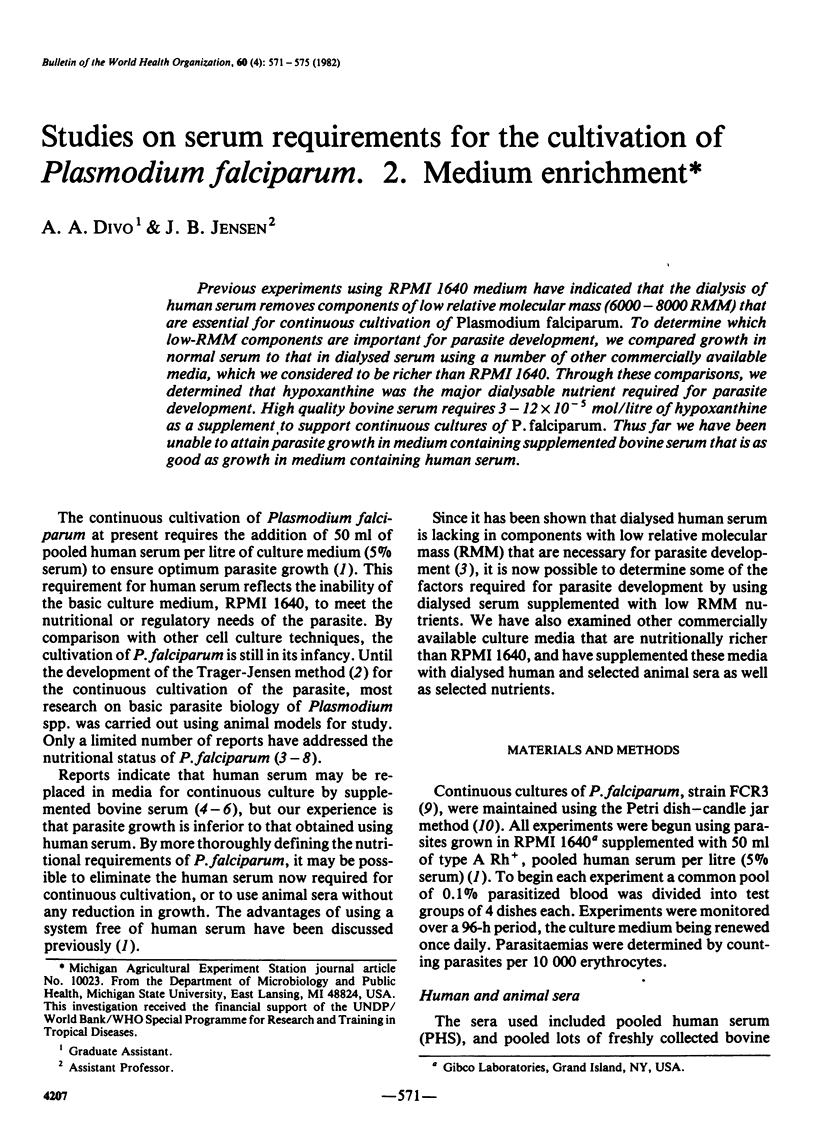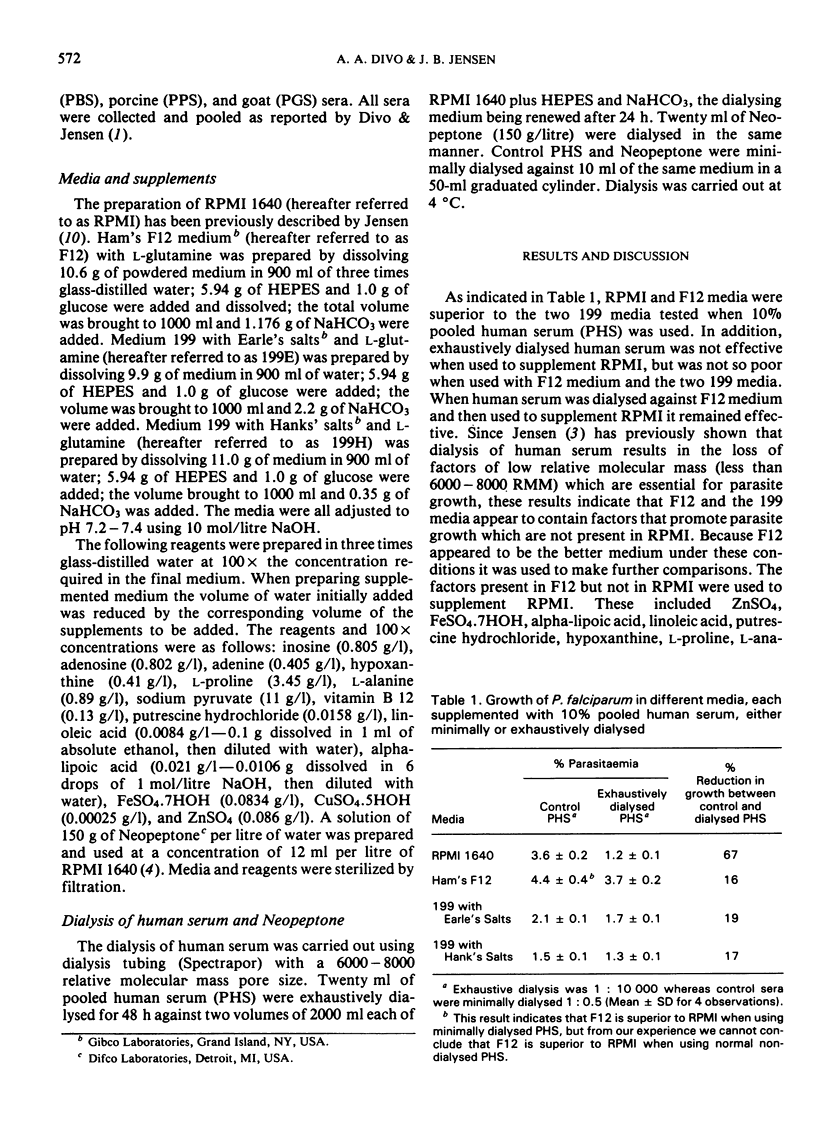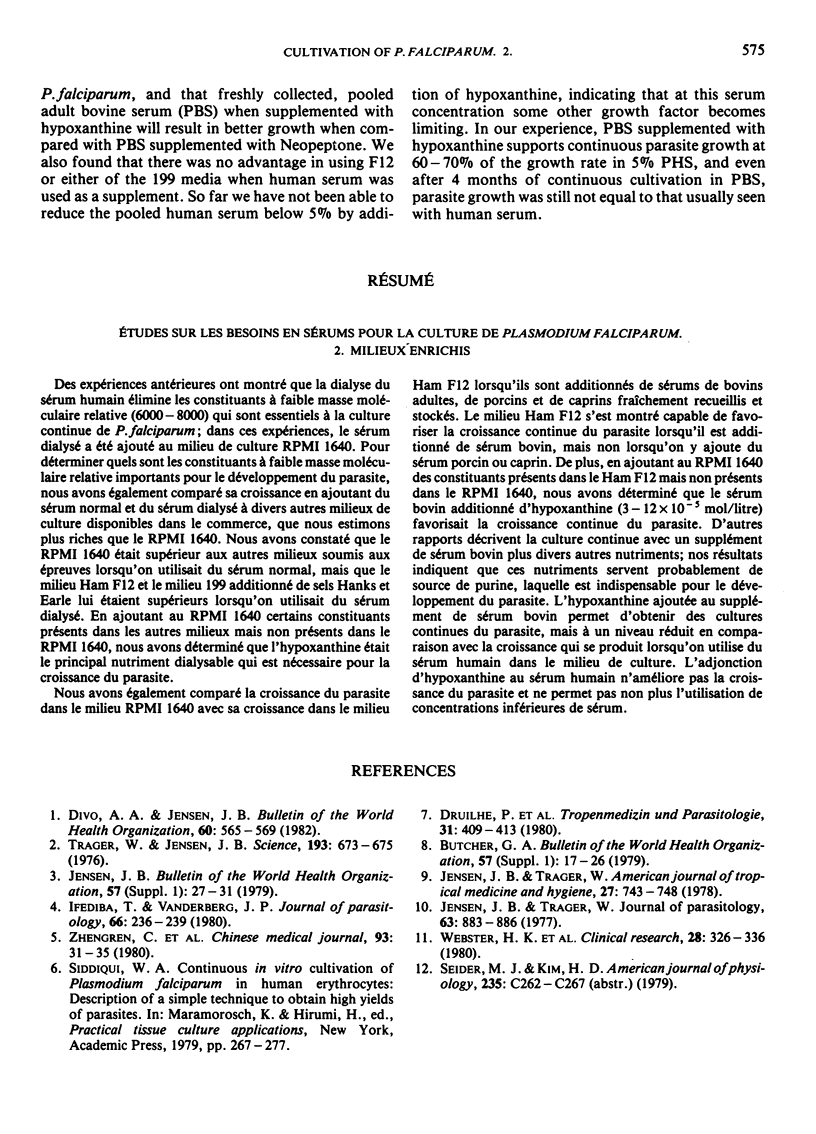Abstract
Previous experiments using RPMI 1640 medium have indicated that the dialysis of human serum removes components of low relative molecular mass (6000-8000 RMM) that are essential for continuous cultivation of Plasmodium falciparum. To determine which low-RMM components are important for parasite development, we compared growth in normal serum to that in dialysed serum using a number of other commercially available media, which we considered to be richer than RPMI 1640. Through these comparisons, we determined that hypoxanthine was the major dialysable nutrient required for parasite development. High quality bovine serum requires 3 - 12 × 10-5 mol/litre of hypoxanthine as a supplement to support continuous cultures of P. falciparum. Thus far we have been unable to attain parasite growth in medium containing supplemented bovine serum that is as good as growth in medium containing human serum.
Full text
PDF




Selected References
These references are in PubMed. This may not be the complete list of references from this article.
- Divo A. A., Jensen J. B. Studies on serum requirements for the cultivation of Plasmodium falciparum. 1. Animal sera. Bull World Health Organ. 1982;60(4):565–569. [PMC free article] [PubMed] [Google Scholar]
- Ifediba T., Vanderberg J. P. Peptones and calf serum as a replacement for human serum in the cultivation of Plasmodium falciparum. J Parasitol. 1980 Apr;66(2):236–239. [PubMed] [Google Scholar]
- Jensen J. B., Trager W. Plasmodium falciparum in culture: establishment of additional strains. Am J Trop Med Hyg. 1978 Jul;27(4):743–746. doi: 10.4269/ajtmh.1978.27.743. [DOI] [PubMed] [Google Scholar]
- Jensen J. B., Trager W. Plasmodium falciparum in culture: use of outdated erthrocytes and description of the candle jar method. J Parasitol. 1977 Oct;63(5):883–886. [PubMed] [Google Scholar]
- Trager W., Jensen J. B. Human malaria parasites in continuous culture. Science. 1976 Aug 20;193(4254):673–675. doi: 10.1126/science.781840. [DOI] [PubMed] [Google Scholar]


